Navigating the world of canine companionship can be as complex as deciphering the latest fashion trends. While you might be excited about adopting your first dog, it’s crucial to remember that some breeds come with a level of intelligence that might be overwhelming for a rookie pet owner. These dogs are whip-smart, often outthinking their people, which can lead to frustration if their mental and physical needs aren’t met. Here are 15 dog breeds known for their high intelligence — and why they might not be the best choice for your first furry friend.
1. Papillon

Papillons are deceptively small but come with a large amount of intelligence and energy, often mastering tricks and commands with ease. Their playful and lively nature means they require more than just simple lapdog activities to stay content. Without adequate mental and physical stimulation, Papillons can become bored and resort to excessive barking or mischievous behavior. For a first-time owner, keeping up with a Papillon’s zest for life can feel as demanding as maintaining an active social calendar.
You’ll find that Papillons excel in activities like agility or advanced obedience training, which help channel their energy positively. Their intelligence means they are quick to pick up on commands but also on any inconsistencies in your training approach. Without proper engagement, they might find their own entertainment, often at the expense of household harmony. If you’re not prepared to meet their high intelligence and energy levels, you might find your Papillon becoming more of a handful than you anticipated.
2. Australian Shepherd
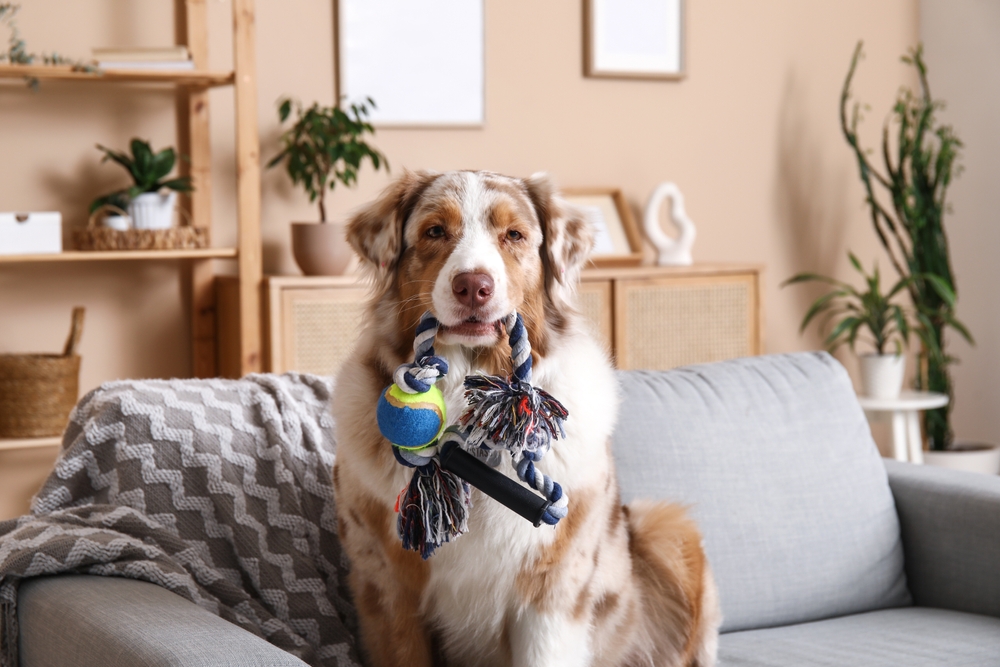
The Australian Shepherd is another breed that boasts incredible intelligence and energy, often found on ranches herding livestock with impressive precision. Their loyalty and quick-wittedness make them exceptional working dogs, but these traits can also pose challenges in a home setting. When under-stimulated, they are prone to developing destructive behaviors as an outlet for their unspent energy. This means that as a first-time owner, you need to provide them with plenty of physical and mental exercise to keep them happy.
You’ll quickly notice that an Australian Shepherd won’t be satisfied with a lazy day on the couch. They need activities that challenge their brains and bodies, such as puzzle toys or agility exercises. Without proper engagement, they might start herding anything in sight — kids, other pets, or even vacuum cleaners. For someone new to dog ownership, managing an Australian Shepherd’s high-energy needs can be like trying to keep up with a professional athlete on an off day.
3. Poodle
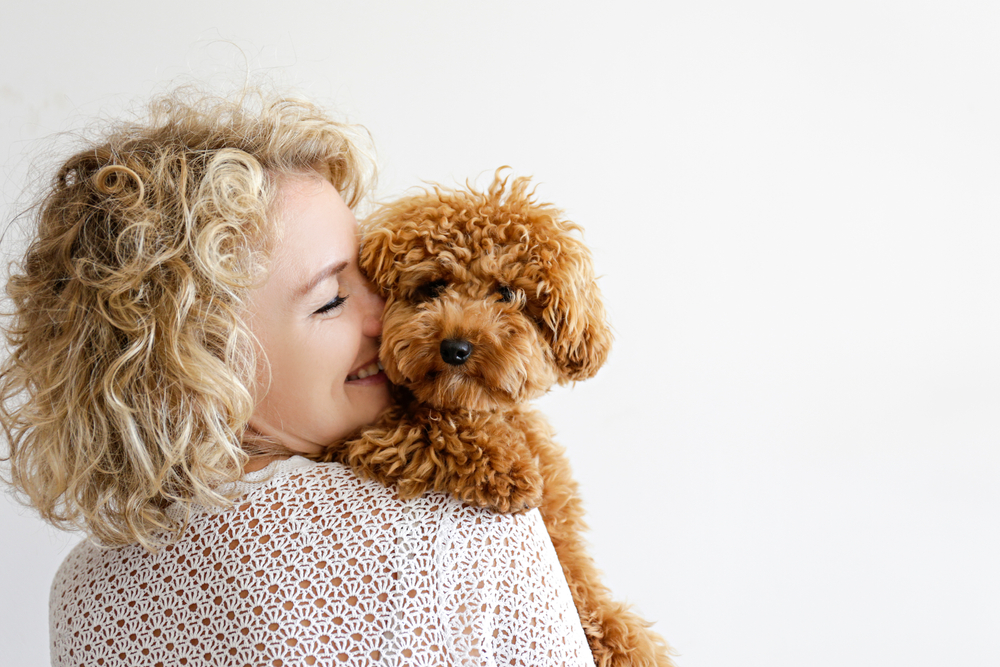
Don’t be deceived by the Poodle’s prim and proper appearance; these dogs are as smart as they are stylish. Known for their sharp minds, Poodles excel in obedience training but require consistent mental stimulation to stay content. Their intelligence often makes them masters at learning tricks and commands, but it also means they can become bored easily, leading to mischievous behavior if left under-challenged. So, if you’re not ready to keep up with their high pace, you might find your Poodle creating its own entertainment.
The American Kennel Club highlights that Poodles need a varied routine to prevent boredom. This means incorporating a mix of physical exercise, like swimming or retrieving, with mental challenges, such as advanced trick training or scent work. Failing to meet these needs can result in a Poodle that becomes overly vocal or engages in unwanted chewing. So while they may look like they just walked out of a fashion magazine, remember that their beautiful exterior houses a mind that needs constant engagement.
4. Belgian Malinois
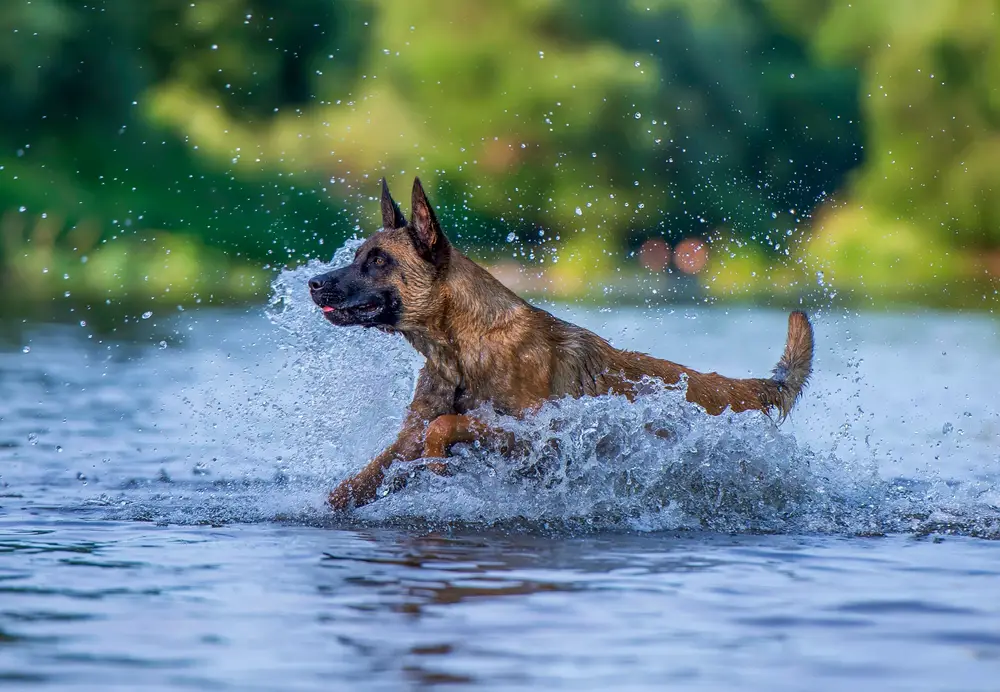
Belgian Malinois are highly intelligent and driven, often employed in police and military roles due to their remarkable ability to learn and retain complex tasks. This breed thrives on structure and purpose, which can be difficult for a first-time dog owner to provide consistently. Without a job to do, the Belgian Malinois can become anxious and channel their energy in destructive ways. Simply put, if you’re not ready to provide them with a fulfilling, task-oriented life, they might start creating their own missions.
These dogs are not suited for a sedentary lifestyle; they need ample exercise and mental challenges to remain balanced. Activities like tracking, advanced obedience training, or protection work can provide the stimulation they require. However, failure to meet these needs can lead to behavioral issues such as excessive barking or digging. For the novice owner, managing a Belgian Malinois can be as overwhelming as preparing for a high-stakes performance without rehearsal.
5. German Shepherd
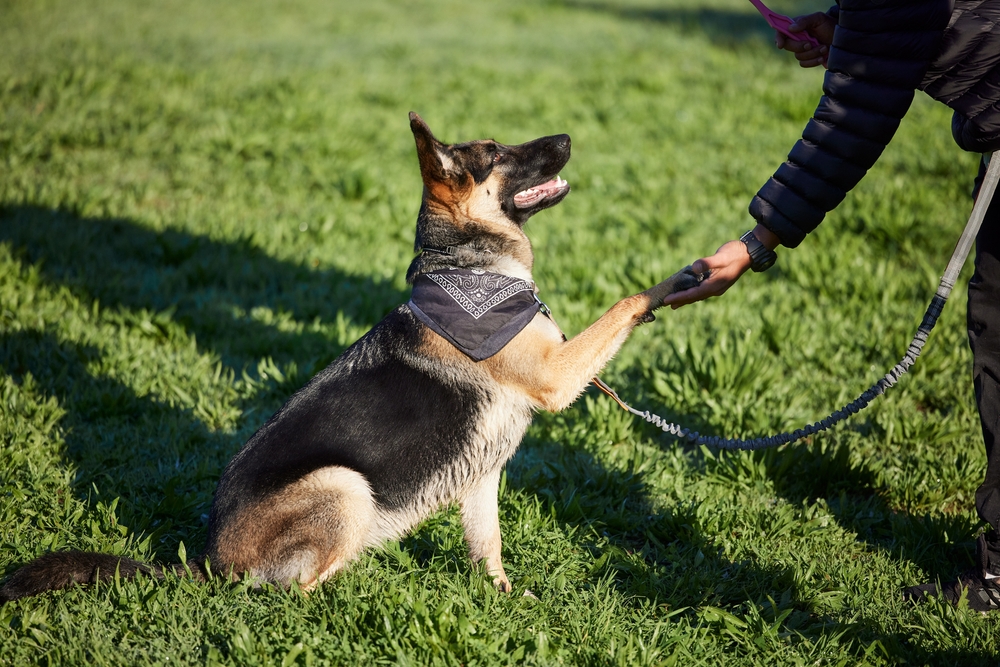
German Shepherds are celebrated for their intelligence and versatility, often employed in roles ranging from service dogs to search and rescue. They are quick learners but require a firm hand and consistent training to reach their full potential. Without proper guidance, their intelligence can lead to stubbornness or anxiety, especially if they sense inconsistency in their owner’s cues. For someone new to dog ownership, the responsibility of training a German Shepherd can feel akin to an internship with a demanding supervisor.
Experts from the German Shepherd Dog Club of America emphasize the importance of early socialization and ongoing training. This breed needs clear leadership to prevent behavioral issues and to channel their energy productively. Without this, they can become overprotective or develop separation anxiety. If you’re not ready to invest time and effort into their training and exercise, you may find your German Shepherd taking on more of an authoritative role in your relationship than you bargained for.
6. Siberian Husky
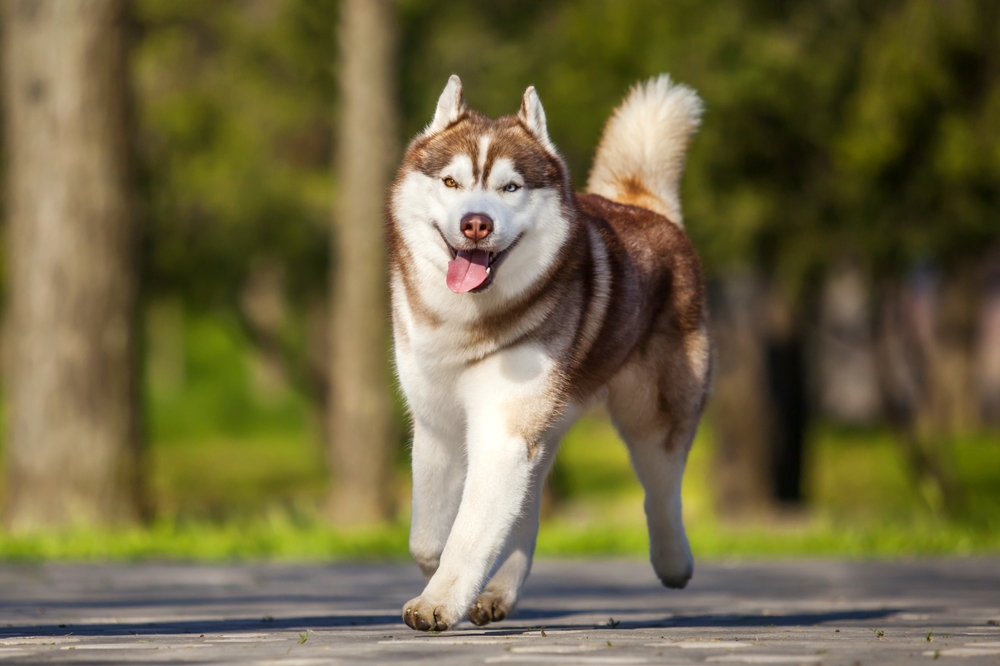
Siberian Huskies are known for their independent spirit and striking appearance, making them popular among dog enthusiasts. However, their intelligence and strong-willed nature can be challenging for first-time owners seeking a cooperative companion. Huskies are notorious escape artists, using their intelligence to find ways out of fenced yards or to outsmart their owners. Their energy levels are high, requiring substantial exercise and mental engagement to prevent boredom and destructiveness.
You’ll find that a Siberian Husky thrives on outdoor adventures, so regular walks or runs are essential. However, their independent nature means they might not always come when called, making recall training essential yet challenging. If left unchecked, their intelligence can lead to undesirable behaviors such as excessive digging or chewing. For a novice owner, managing a Husky’s needs can feel like trying to negotiate with a free-spirited teenager.
7. Jack Russell Terrier
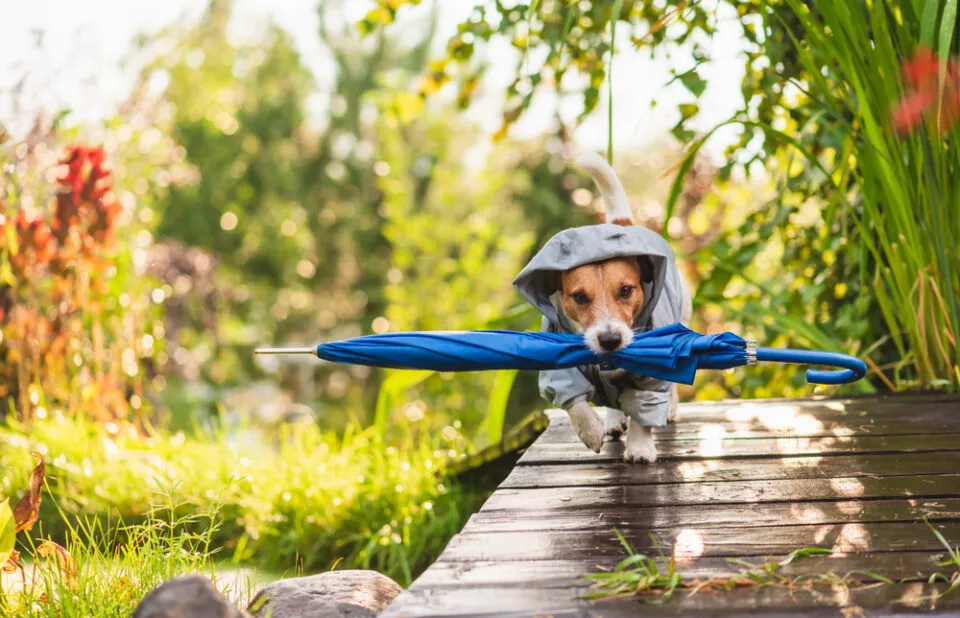
Jack Russell Terriers pack a punch of energy and intelligence into their small frames, often likened to living with a perpetual motion machine. Their inquisitive nature and determination make them excellent hunters, but these traits can be overwhelming in a domestic setting. A Jack Russell left to its own devices might dig up your garden or chase after small animals, fueled by its intense prey drive. For a first-time owner, this breed’s boundless energy can be as challenging to manage as a double espresso on an empty stomach.
According to the Jack Russell Terrier Club of America, these dogs require a strong, consistent leader to guide their behavior. They thrive on activities like agility training or earthdog trials, which provide both mental and physical stimulation. Without adequate engagement, they can become bored and destructive, often testing their boundaries. If you’re not prepared to match their vigor and curiosity, you might find yourself struggling to keep up with their antics.
8. Doberman Pinscher
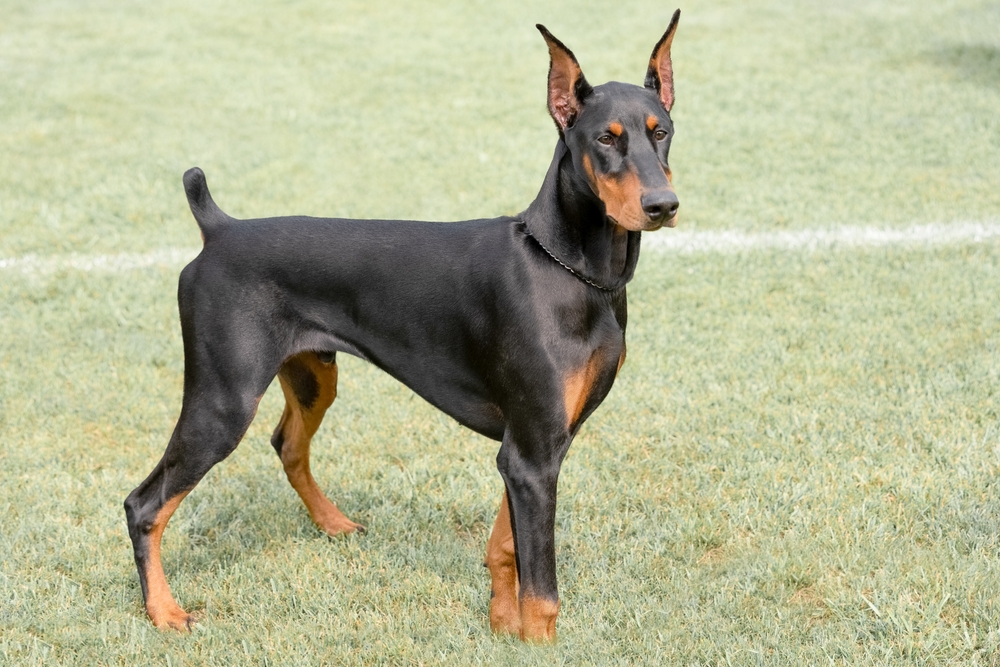
Doberman Pinschers are renowned for their loyalty and intelligence, often seen as both elegant and imposing. While their trainability is highly regarded, their need for consistent leadership can make them a handful for inexperienced owners. Without firm guidance, a Doberman might become willful or overly protective, responding more to instinct than instruction. These dogs thrive in environments where they have a clear sense of purpose, whether through advanced obedience training or protection work.
You’ll quickly find that a Doberman requires not just physical exercise, but mental challenges to keep them satisfied. Activities like obedience competitions or agility courses can help channel their intelligence positively. Without these outlets, they may resort to unwanted behaviors such as excessive barking or chewing. For someone unaccustomed to the demands of a high-intelligence breed, a Doberman can be as intimidating to manage as a high-profile project without a roadmap.
9. Shetland Sheepdog
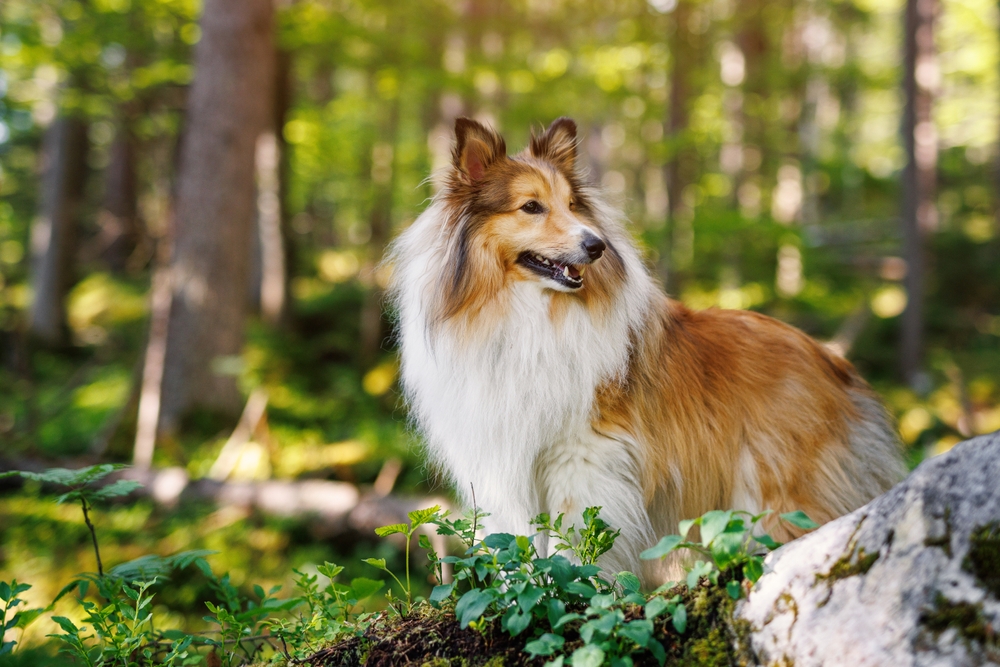
Shetland Sheepdogs, or Shelties, are known for their keen intelligence and eagerness to please, often excelling in obedience and agility sports. Their sharp minds require consistent challenge, making them less ideal for first-time owners who may not be ready to provide the stimulation they need. Without proper engagement, Shelties can become anxious or develop obsessive behaviors, such as excessive barking. For someone new to dog ownership, managing a Sheltie’s needs can feel like juggling a dozen tasks at once without dropping the ball.
These dogs are highly trainable, responding well to positive reinforcement techniques. They thrive in environments where they can participate in activities that challenge their minds, such as herding trials or advanced obedience classes. However, their sensitivity means they require a gentle, yet firm hand to guide their behavior. If you’re not prepared to offer the consistent leadership and exercise they need, you might find your Sheltie’s intelligence working against you rather than with you.
10. Rottweiler
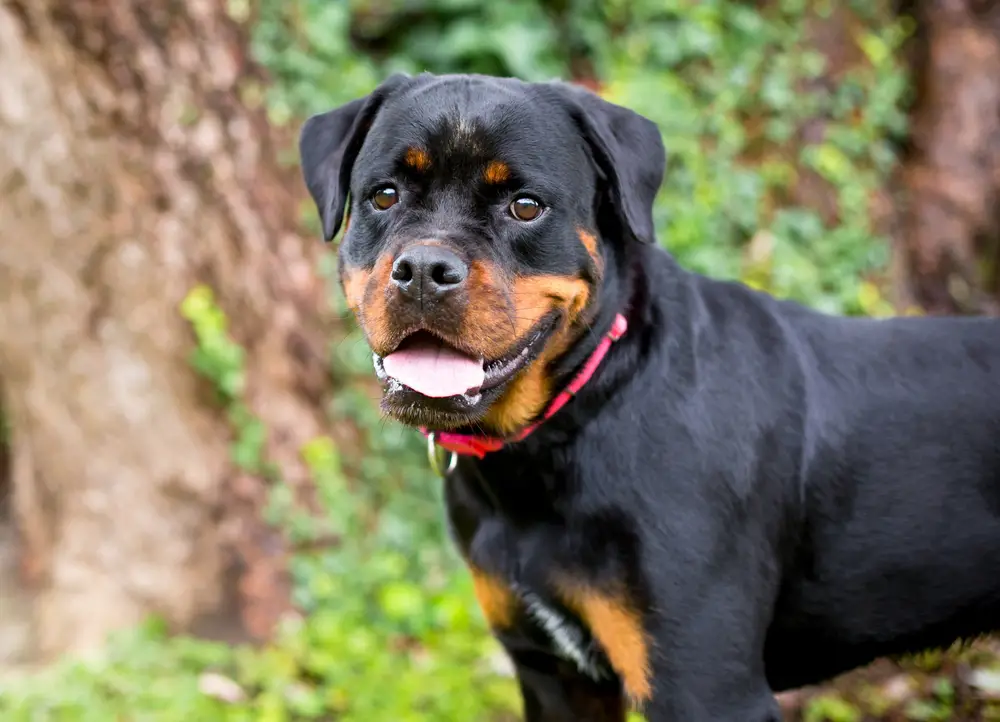
Rottweilers are powerful dogs with a strong sense of loyalty and intelligence, often seen as both protective and affectionate companions. Their trainability is high, but they require an experienced hand to guide their behavior effectively. Without strong leadership, Rottweilers may become dominant or develop behavioral issues, such as guarding tendencies that can be difficult to manage. For a first-time owner, handling a Rottweiler’s needs can be like trying to steer a powerful vehicle without knowing how to drive stick.
These dogs thrive in environments where they have clear rules and consistent training, benefiting from activities that engage both their minds and bodies. Advanced obedience training or protection sports can provide the stimulation they need. However, inconsistency or lack of engagement can lead to them becoming bored, which may manifest as excessive barking or chewing. If you’re not ready to provide the structure and commitment they require, you might find your Rottweiler’s intelligence working against your household harmony.
11. Border Collie
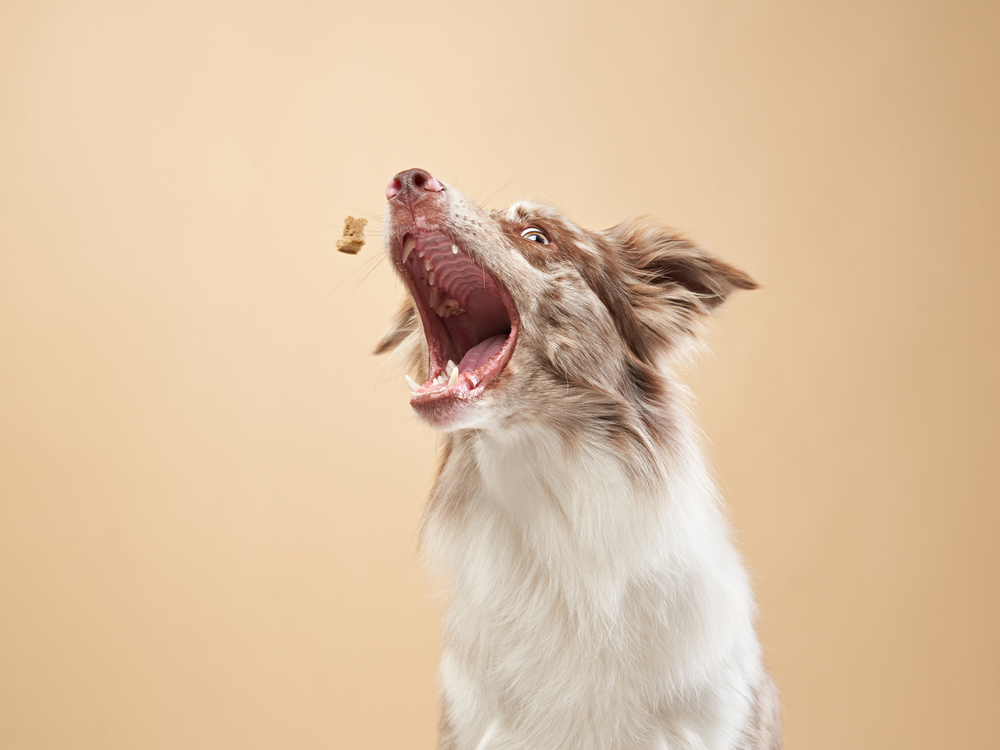
Border Collies are renowned for their extraordinary intelligence and work ethic, often hailed as the Einstein of the dog world. They thrive on mental stimulation and physical activity, requiring more than just a daily stroll around the block. Their ability to learn commands and tasks quickly can be a double-edged sword; it means they can easily outsmart you if they’re bored. A Border Collie left to its own devices might resort to herding your children or rearranging furniture out of sheer lack of challenge.
According to Dr. Stanley Coren, a psychology professor and canine expert, Border Collies need significant mental engagement. You can’t just leave them alone with a chew toy and expect good behavior; these dogs flourish in environments where they can engage in agility training or complex tasks. If you’re not ready to commit to hours of engagement each week, you might find your Border Collie coming up with its own tasks, which may not always align with your idea of a well-behaved pet. In essence, owning a Border Collie is like living with a highly energetic toddler who just discovered how to use an iPad.
12. Labrador Retriever
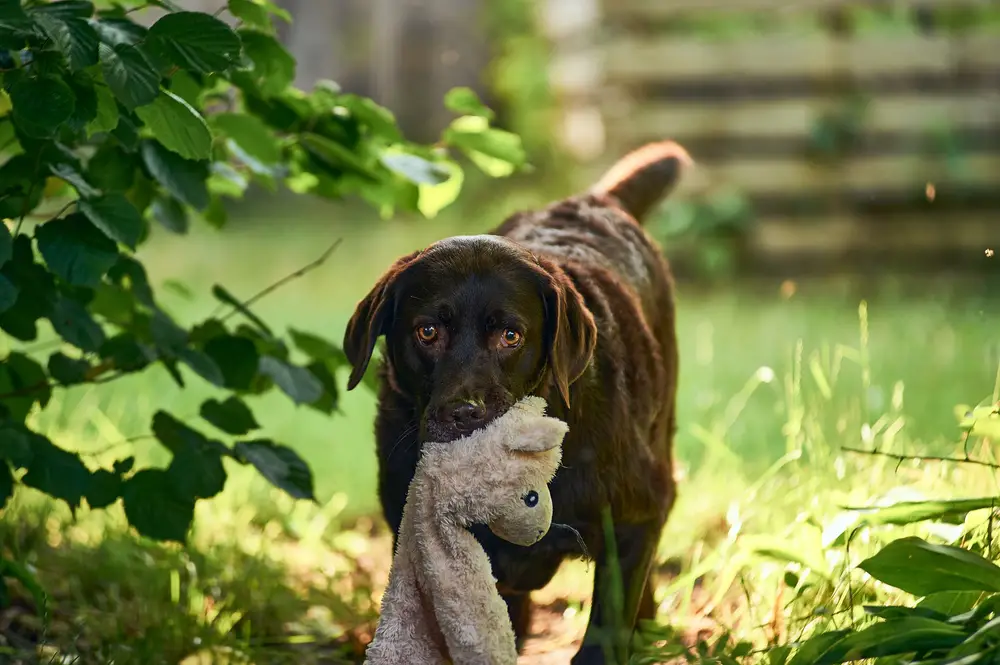
Labrador Retrievers are often praised for their friendly nature and intelligence, making them a popular choice for families. While they are generally easygoing, their intelligence means they require mental stimulation to prevent boredom. A Labrador that isn’t given enough to do can become destructive, chewing on furniture or digging in the yard. For a first-time owner, managing a Labrador’s energy and intelligence can feel like trying to keep up with a whirlwind tour guide.
These dogs thrive on activities that engage both their minds and bodies, such as retrieving games or scent work. Their eagerness to please makes them highly trainable, but they still require consistency and variety in their routine. Without these, a Labrador may become unruly or develop undesirable behaviors. If you’re not ready to provide the mental and physical challenges they need, you might find your Labrador’s intelligence working against your peaceful home environment.
13. Cocker Spaniel

Cocker Spaniels are known for their gentle demeanor and sharp minds, often excelling in obedience training and canine sports. Their intelligence means they require consistent mental challenges, making them less ideal for first-time owners who may not be ready for their demanding nature. Without proper stimulation, Cocker Spaniels can become anxious or develop unwanted behaviors like excessive barking. For someone new to dog ownership, managing a Cocker Spaniel’s needs can feel like adapting to the demands of a new job without much guidance.
These dogs respond well to training that incorporates positive reinforcement and variety, keeping them engaged and content. Activities such as agility or advanced obedience classes can help channel their intelligence in a positive direction. However, their sensitivity means they require a gentle yet firm hand to guide their behavior. If you’re not prepared to offer the consistent leadership and exercise they need, you might find your Cocker Spaniel’s intelligence working against your household peace.
14. Miniature Schnauzer
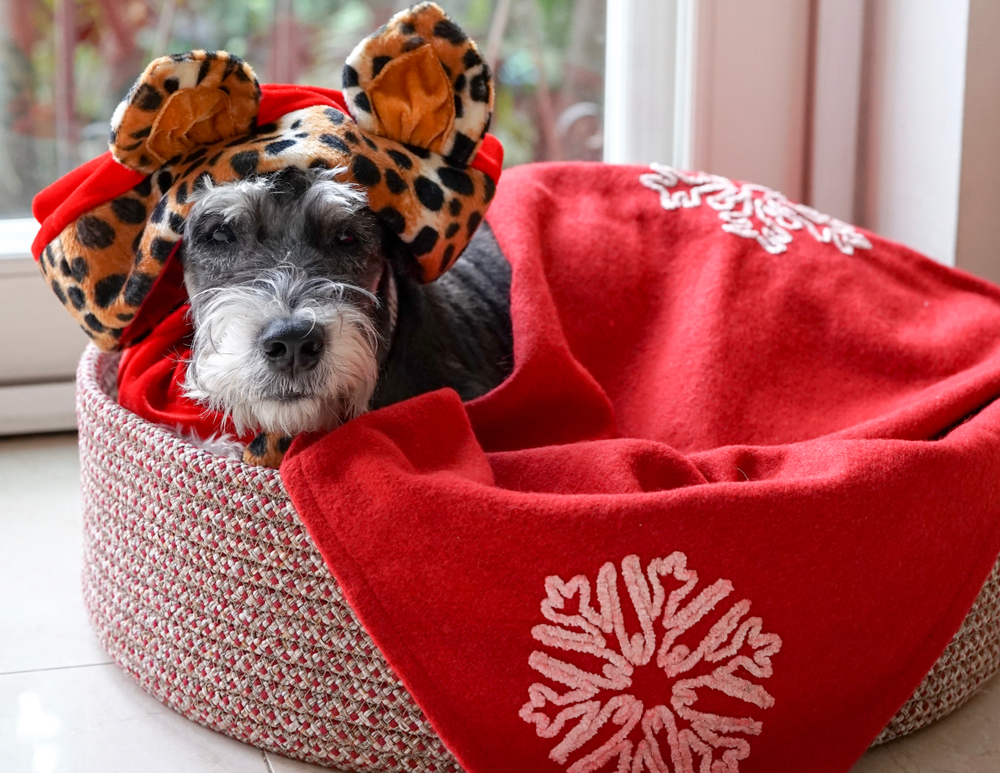
Miniature Schnauzers are small but mighty, with intelligence and enthusiasm that often surpass their stature. Their inquisitive and energetic nature demands more than just simple activities to keep them engaged and happy. Without sufficient mental and physical stimulation, Schnauzers can become bored and resort to excessive barking or digging. For a first-time owner, managing a Schnauzer’s zest for life can feel as challenging as keeping up with a livewire at a crowded event.
They excel in activities like agility or advanced obedience training, which help them channel their energy positively. Their intelligence means they are quick to learn commands but also quick to exploit any lapses in training consistency. Without proper engagement, they might find their own entertainment, often at your expense. If you’re not ready to meet their high intelligence and energy levels, you might find your Schnauzer becoming more of a challenge than you anticipated.
15. Airedale Terrier
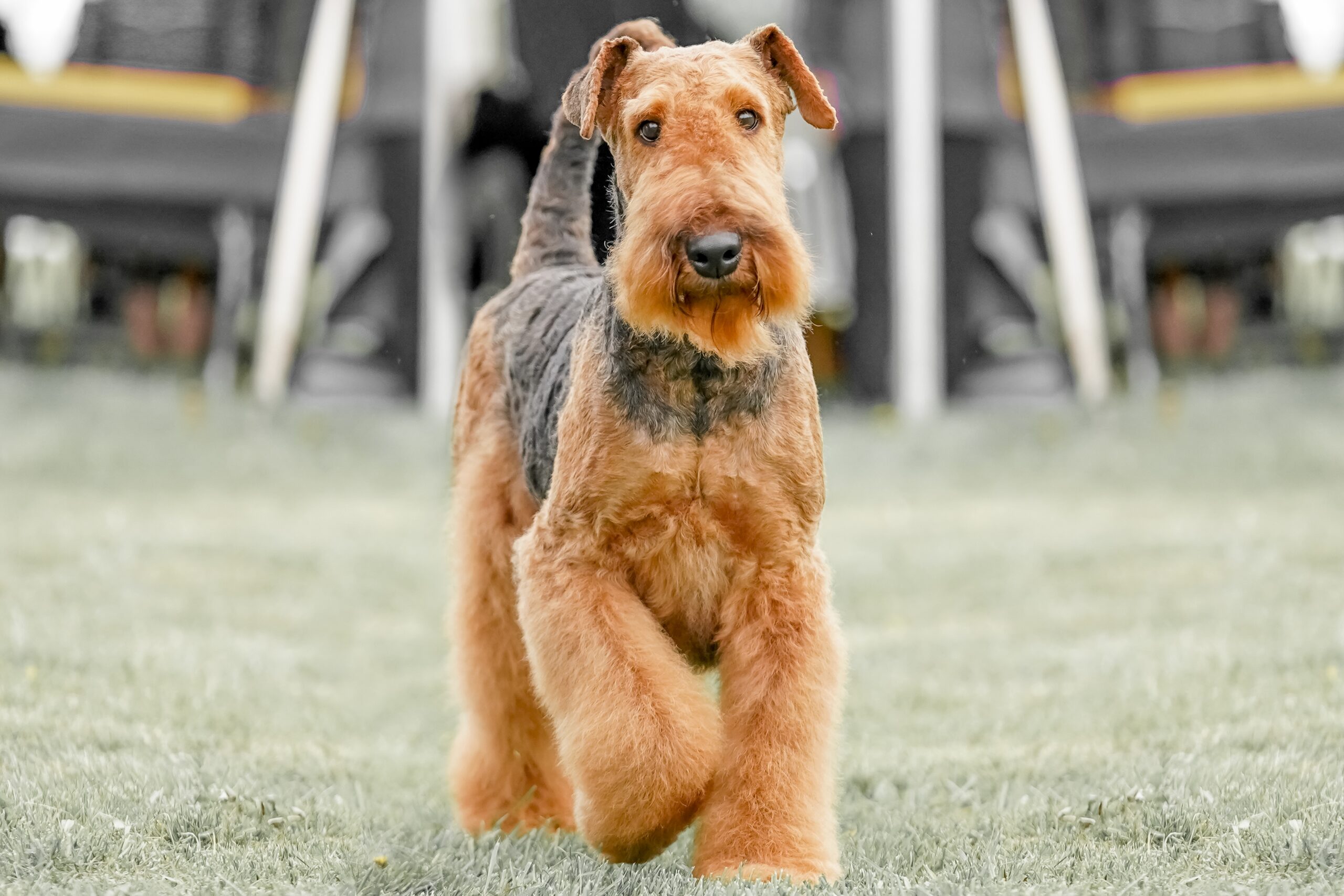
Airedale Terriers, known as the “King of Terriers,” possess a combination of intelligence and assertiveness that can be overwhelming for a novice dog owner. Their independent spirit and high energy levels demand consistent mental and physical challenges. Without adequate stimulation, Airedales can become bored and develop undesirable behaviors, such as chewing or digging. For someone new to dog ownership, managing an Airedale’s needs can feel like trying to lead a team without prior experience.
These dogs thrive in environments where they have clear leadership and activities that challenge both their minds and bodies. Agility training or advanced obedience exercises can provide the stimulation they need to stay content. However, their independent nature means they require a firm yet gentle hand to guide their behavior. If you’re not prepared to invest the time and effort necessary to meet their demands, you might find your Airedale’s intelligence working against your household harmony.
